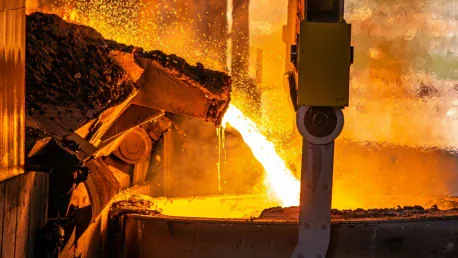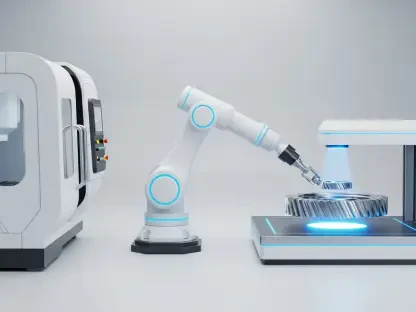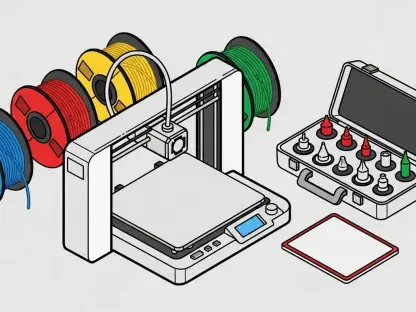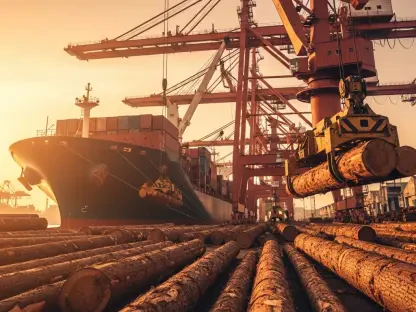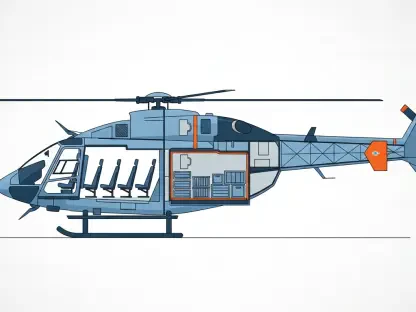Kwame Zaire is a renowned manufacturing expert specializing in electronics and equipment, with a strong focus on production management. He is also a thought leader on predictive maintenance, quality, and safety. Today, we delve into various aspects of the steel industry’s current state, national security concerns, policy impacts, tariffs, corporate tax incentives, investment decisions, and future outlook.
Can you describe the current state of steel production and fabrication in the United States? How has the new administration’s economic actions impacted this industry?
Currently, the steel industry in the U.S. is at a pivotal moment. The economic actions taken by the new administration are geared towards increasing domestic steel production and reducing reliance on foreign imports. Initiatives such as imposing tariffs on imported steel and offering tax incentives to domestic manufacturers have created a mixed impact. While some businesses thrive and expand production, others face challenges related to increased costs and competition uncertainties.
How significant are the national security risks associated with depending on foreign steel production? What measures are being taken to mitigate these risks domestically?
The national security risks of relying heavily on foreign steel production are considerable, as it threatens supply chain stability in critical times. To mitigate these risks, the U.S. is reinforcing policies that encourage domestic steel production. Measures include tariffs on imported steel, incentives for building local manufacturing plants, and initiatives to boost the overall capacity and resilience of the U.S. steel industry.
What was the controversy surrounding former President Joe Biden blocking the sale of United States Steel Corporation to Nippon Steel Corporation? How do you think this blocking has affected the US steel industry?
The controversy centered around concerns of national security and economic independence. Blocking the sale was seen as a move to keep key industries under U.S. control. The effect has been dual-faceted: while it has maintained domestic control over steel production, it has also led to debates on the openness of U.S. markets and foreign investments in critical industries.
What are your thoughts on the 25% tariff on steel imports imposed by President Donald Trump? How do economists believe these tariffs will affect inflation in steel and other products? How do you see these tariffs influencing domestic steel production?
The 25% tariff is a double-edged sword. While it aims to protect domestic steel manufacturers from cheaper foreign imports, it also raises the cost of raw materials, thus potentially driving up inflation in steel-dependent products, including cars and household appliances. Economists are divided, with some predicting higher inflation and others seeing a boost in domestic production as companies invest more in local manufacturing.
How might the proposed 15% tax rate for corporations that manufacture in the US incentivize steel production? Do you think these incentives are sufficient to boost domestic production? Why or why not?
The proposed 15% tax rate is designed to make domestic manufacturing more lucrative by reducing corporate tax burdens. This could incentivize investors to open new steel production plants or expand existing facilities. However, while attractive, these incentives may not be sufficient alone. Comprehensive strategies, including infrastructure improvements and workforce training, are also necessary to sustainably boost production.
How are business leaders currently reacting to the announced tariffs and other policies? What factors are they considering when deciding to invest in steel production plants?
Business leaders are cautiously optimistic but also wary. They consider factors such as long-term policy stability, potential returns on investment, market demand, and the competitive landscape. The tariffs and tax incentives are helpful, but uncertainties around trade policies and global market shifts are major considerations.
How crucial is steel for the automotive industry in the US? In what ways does the construction industry depend on steel? Why is steel important for the machinery and household appliances manufacturing industry? What role does steel play in the energy industry’s various segments?
Steel is indispensable across these industries. In the automotive sector, it ensures the structural integrity and durability of vehicles. The construction industry depends on steel for building infrastructure like bridges and skyscrapers, which require robust, reliable materials. For machinery and household appliances, steel provides the necessary strength and lifespan. The energy sector uses steel in pipelines, drilling equipment, and renewable energy infrastructure, underpinning its operations.
How could expanded steel production and fabrication reduce prices for consumers? What other economic benefits or drawbacks could result from the current administration’s approach?
Expanded steel production can potentially lower prices by increasing supply and reducing dependence on costly imports. Other economic benefits include job creation, improved trade balances, and heightened industrial capabilities. However, drawbacks might include initial costs of setting up new plants and potential trade conflicts with other steel-producing countries.
What do you think the future holds for the steel industry in the United States? How might the current strategies impact the steel industry’s long-term sustainability?
The future appears cautiously optimistic. If current strategies succeed, the U.S. steel industry could see significant growth, reduced foreign dependency, and strengthened national security. Long-term sustainability will depend on adapting to technological advancements, maintaining competitive pricing, and ensuring environmental regulations are met. The focus should be on innovation and efficiency to keep the industry resilient and thriving.
